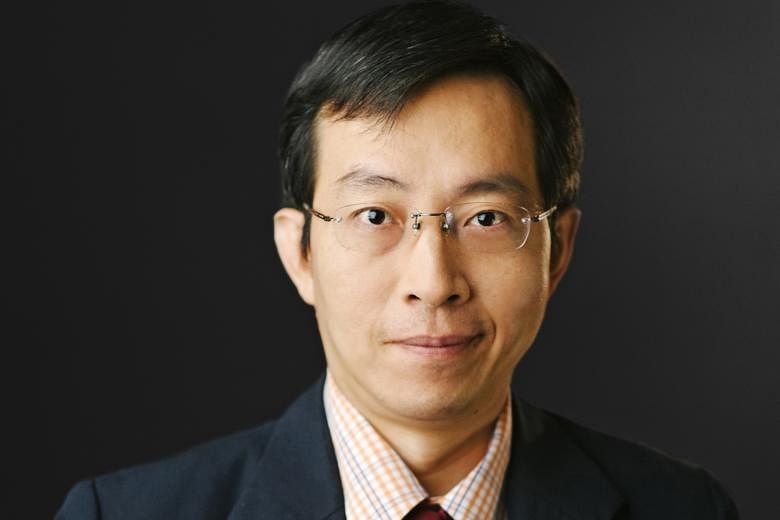The impact of rapid global urbanisation and rampant economic development over the past two centuries is most evident in our society's "detritus" or solid waste. According to the latest 2014 statistics, about 7.5 million tonnes of waste is generated yearly in Singapore alone.
This means each person here generated about 1,330kg of waste in a year. Only about 59 per cent of this was recycled, while the remainder was generally incinerated before being sent to the Semakau Island landfill.
Incineration is the primary waste treatment process here as it effectively reduces the volume of solid waste by burning to form carbon dioxide and heat.
The heat produces super-hot steam which is then converted into electricity in a waste-to-energy plant. However, waste burning potentially produces a cocktail of toxic by-products that can be harmful to the environment and public health if it is not treated or cleaned properly. Dioxin is one of the major by-products, and poses a great threat to human health.
About 25 per cent of the incineration by-product that is transported to Semakau for landfilling is ash. The Semakau landfill receives about 1,800 tonnes of incineration ash and 570 tonnes of non-incinerable waste every day. Despite its large capacity of 63 million cubic metres, it is expected to be able to cater for the needs of Singapore only till 2040.
-
About the writers
-
Professor Wang Chi-Hwa, 51, is with the Department of Chemical and Biomolecular Engineering at the National University of Singapore (NUS).
Under the E2S2 (Energy and Environmental Sustainability Solutions for Megacities) Create (Campus for Research Excellence and Technological Enterprise) programme at the NUS Environmental Research Institute, Prof Wang's research group is working on technology for waste-to-energy applications, focusing on the specific demands of megacities such as Singapore and Shanghai.
In particular, he is looking at processing biomass and other solid wastes, such as sewage sludge, paper, food waste and plastics, to produce energy.
Dr Thawatchai Maneerung, 33, is a research fellow under the E2S2 Create programme.
His research has been in the areas of catalysis, gas-separation membranes and catalytic membrane reactors, renewable energy and waste-to-energy, and his work has already resulted in one United States patent and international publications.
Currently, he is looking at biomass or solid waste gasification for clean energy production as well as treatment and re-utilisation of ash.
Meanwhile, effluents are leached from the landfill which, if not properly treated, can contaminate groundwater. That, in turn, can lead to a public sanitation and safety problem. Hence, there is an urgent need to develop a low-cost, high-efficiency and environmentally friendly waste-treatment system in Singapore.
At the National University of Singapore (NUS), we have geared our research towards enhancing the international image of the country as a clean and green city. Our work, an inter-disciplinary collaboration among researchers from the university and industries, promotes fundamental engineering and technological research related to waste management. One of many techniques being explored is gasification.
What makes gasification different from incineration is its ability to convert biomass and other solid waste into a usable synthesis gas (or syngas - a mixture of hydrogen and carbon monoxide). In the gasification process, the solid waste is not used as a fuel, but as a feedstock for the process of high-temperature chemical conversion.
In the gasifier, solid waste reacts with little or no oxygen, and is broken down into smaller molecules which can be converted into syngas. Instead of producing just heat and electricity, as happens in incineration, the syngas produced by gasification along with other by-products can be turned into valuable commercial products such as fuels, chemicals and fertilisers, as well as electricity.
Also, environmental pollutants no longer emerge during the gasification process, as the oxygen-deficient atmosphere in a gasifier does not provide the environment required for their formation.
Gasification is therefore an attractive alternative to incineration in terms of productivity, energy efficiency and environmental sustainability. The energy recovered from the solid waste could also potentially help reduce Singapore's dependency on imported fuel.
In the past few years, we have successfully set up a laboratory-scaled gasifier where we have tested a variety of solid waste, such as wood chips, and biomass waste such as chicken manure, horse manure and food waste.
One kilogram of woodchips, for instance, can produce syngas equivalent to 0.75kWh of electricity (one kWh of energy is equal to 1,000 watt hours and will power a 100-watt light bulb for 10 hours). We have also designed a series of experiments by mixing biomass with sewage sludge. Sewage sludge is the unavoidable solid waste generated from waste-water treatment plants.
The disposal management of sewage sludge is a thorny problem as it comprises a variety of toxic and harmful substances such as heavy metals, bacteria, viruses, non-biodegradable organic compounds and dioxins.
Improper disposal of sewage sludge can cause serious air, soil and water pollution. Gasification could serve as an environmentally friendly sewage disposal technique, which effectively converts sewage to fuels or syngas. Our gasification experiments show that dried sewage sludge is a suitable feedstock for co-gasification with woodchips to produce syngas and generate electricity.
Gasification also generates two main solid residues - bottom ash (primarily minerals and metals with minimal carbon) and char (unreformed carbon) - as unavoidable by-products. The amount of this solid residue varies from 10 to 30 per cent of the feedstock mass, depending on the efficiency of the gasification system and feedstock properties.
Although bottom ash and char are not classified as hazardous waste, they may pose potential risks to human health and the environment as they contain various inorganic components (such as potassium and calcium) and trace amounts of heavy metals (such as copper and zinc).
Our research aims to develop beneficial materials from this ash and char to reduce the environment and health concerns associated with their disposal.
This kind of re-utilisation of ash and char not only enhances their environmental friendliness but also the economic efficiency of the gasification process.
The next step is collaborating with industrial partners. We are working with Bioplas Energy (Asia Pacific), a company which provides qualified technologies for alternative energy, renewable energy and bioenergy, to develop an industry-scaled gasification system to produce electricity and bio-char from biomass and solid waste.
Due to the highly porous structure of the bio-char obtained from the gasification of biomass, it has been used to improve soil quality by increasing soil retention of nutrients and agrochemicals utilised by plants and crops. More nutrients stay in the soil instead of leaching into groundwater.
Our research is also training much-needed technological manpower in fields that are important to the waste-management and energy community.


